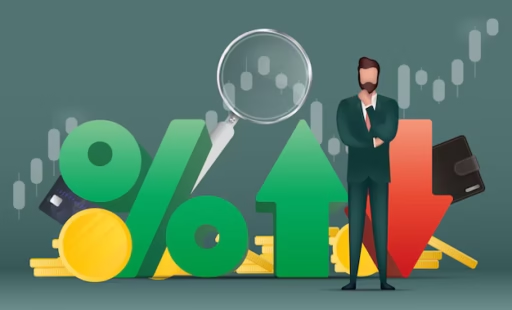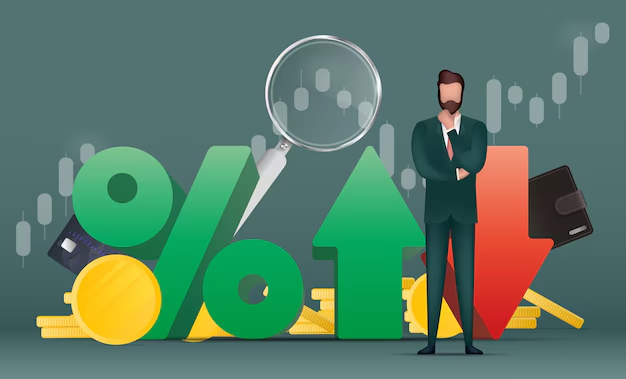Economic indicators are critical tools that guide the decision-making process for governments, central banks, businesses, and investors. These metrics provide insights into the performance and health of an economy, helping policymakers craft strategies and responses to maintain economic stability and growth. Understanding the role of economic indicators in policy and decision-making is essential for fostering effective governance and business strategies.
What Are Economic Indicators?
Economic indicators are statistical measures that reflect the overall health and trajectory of an economy. They help in understanding economic conditions, trends, and forecasts. Economic indicators are generally categorized into three groups: leading, lagging, and coincident indicators. Leading indicators predict future economic activity, lagging indicators confirm trends that have already been established, and coincident indicators move in tandem with the economy.
Some of the most common economic indicators include Gross Domestic Product (GDP), inflation rates, unemployment rates, consumer confidence indices, and trade balances. Each of these indicators provides different insights into economic performance, allowing decision-makers to analyze trends and take informed actions.

The Role of Economic Indicators in Policymaking
Economic indicators play a central role in the policymaking process. Governments and central banks use these metrics to shape fiscal and monetary policies aimed at stabilizing the economy, promoting growth, and ensuring financial stability.
- Monetary Policy Decisions
Central banks, like the U.S. Federal Reserve, the European Central Bank, and others worldwide, closely monitor economic indicators when determining monetary policy. Indicators such as inflation, unemployment, and GDP growth are used to decide interest rates and money supply. For instance, if inflation is rising above target levels, central banks may raise interest rates to slow down borrowing and spending, cooling down the economy and stabilizing prices. Conversely, if the economy is in a downturn, central banks may lower interest rates to stimulate investment and spending.
- Fiscal Policy Decisions
Government policymakers, such as finance ministers, also use economic indicators to guide decisions regarding taxation, public spending, and budgeting. Indicators like GDP growth, fiscal deficits, and the employment rate help in determining the government’s fiscal stance. For example, in times of high unemployment, governments may increase public spending and reduce taxes to stimulate job creation and economic recovery. Alternatively, in times of high inflation, governments might increase taxes or cut spending to cool the economy.
- Predicting Economic Cycles
Economic indicators are essential for forecasting economic cycles, including recessions, expansions, and periods of inflation or deflation. Leading indicators, such as stock market performance or consumer spending, provide early signals of economic shifts. Policymakers use these to predict and prepare for changes in the economic environment, adjusting their strategies accordingly. These indicators are particularly helpful for anticipating periods of growth or contraction, allowing decision-makers to take preemptive measures.
- Global and Domestic Comparisons
Economic indicators also facilitate comparisons between different countries or regions. Policymakers use indicators like GDP growth, trade balances, and inflation rates to evaluate their economic standing relative to other nations. This comparative analysis informs international trade policies, foreign investment strategies, and diplomatic relations. Countries may adjust their economic policies based on how their performance stacks up against global competitors.
- Sector-Specific Policies
Economic indicators are not only useful at the macroeconomic level but also for creating targeted, sector-specific policies. For instance, data on unemployment rates, wages, and industrial production can guide government efforts to support specific industries, such as manufacturing, technology, or agriculture. By understanding sectoral trends, policymakers can make strategic decisions about subsidies, tariffs, or regulatory changes to foster growth in these areas.
Economic Indicators and Business Decision-Making
Businesses, too, rely heavily on economic indicators to make informed decisions. From choosing expansion locations to deciding on pricing strategies, economic indicators provide valuable data that businesses can use to assess market conditions and potential risks.
- Investment and Expansion Decisions
Investors use economic indicators like GDP growth, inflation, and interest rates to make decisions about where to allocate capital. A growing economy may encourage investments in stocks or real estate, while a contracting economy may lead to more conservative investment strategies. Additionally, businesses looking to expand may examine regional economic indicators, such as income levels and labor force data, to choose locations with the highest growth potential.
- Pricing Strategies
Inflation, a key economic indicator, directly affects businesses’ pricing strategies. Rising inflation can lead to higher costs for raw materials and labor, prompting businesses to adjust their prices accordingly. Conversely, in a deflationary environment, companies may reduce prices to maintain sales volumes.
- Hiring and Labor Market Decisions
Unemployment rates and labor force participation rates are crucial for businesses looking to hire. A low unemployment rate may indicate a tight labor market, making it harder to find skilled workers and driving up wages. On the other hand, high unemployment may indicate a surplus of available workers, making it easier for companies to hire at lower wages.

The Challenges of Interpreting Economic Indicators
While economic indicators are powerful tools, interpreting them can be challenging. The complexity of the global economy, the interconnectedness of different markets, and the nuances of specific indicators can lead to different interpretations. For example, a rise in GDP might be seen as a sign of economic growth, but if inflation is also rising rapidly, it may indicate a risk of overheating.
Additionally, economic indicators alone cannot provide a complete picture of the economy. External factors such as geopolitical events, natural disasters, or technological changes can also significantly impact economic performance, making it necessary for policymakers to consider a wide range of information when making decisions.
Also Read : What To Expect from A Professional Financial Planner
Conclusion
Economic indicators are indispensable in guiding policy and decision-making processes. Whether at the level of central banks, governments, businesses, or investors, these metrics provide essential insights into the economic landscape. By using these indicators, decision-makers can adapt to changing conditions, promote growth, and mitigate risks. However, interpreting these indicators requires careful consideration of the broader context, as they are only one piece of the puzzle in understanding complex economic dynamics.
Frequently Asked Questions
1. What is the difference between leading and lagging economic indicators?
Leading indicators predict future economic activity, while lagging indicators confirm trends that have already occurred.
2. How do central banks use economic indicators?
Central banks use indicators like inflation and unemployment rates to make decisions about interest rates and monetary policy.
3. Can businesses use economic indicators?
Yes, businesses use economic indicators to make decisions on investment, pricing strategies, and hiring based on economic conditions.
4. Why are GDP and inflation important indicators?
GDP measures the total value of goods and services produced, reflecting economic growth, while inflation indicates the rate at which prices are rising, affecting purchasing power.
5. What challenges do policymakers face when interpreting economic indicators?
Policymakers must consider the broader context, including global events, and understand that economic indicators can be affected by many external factors.

